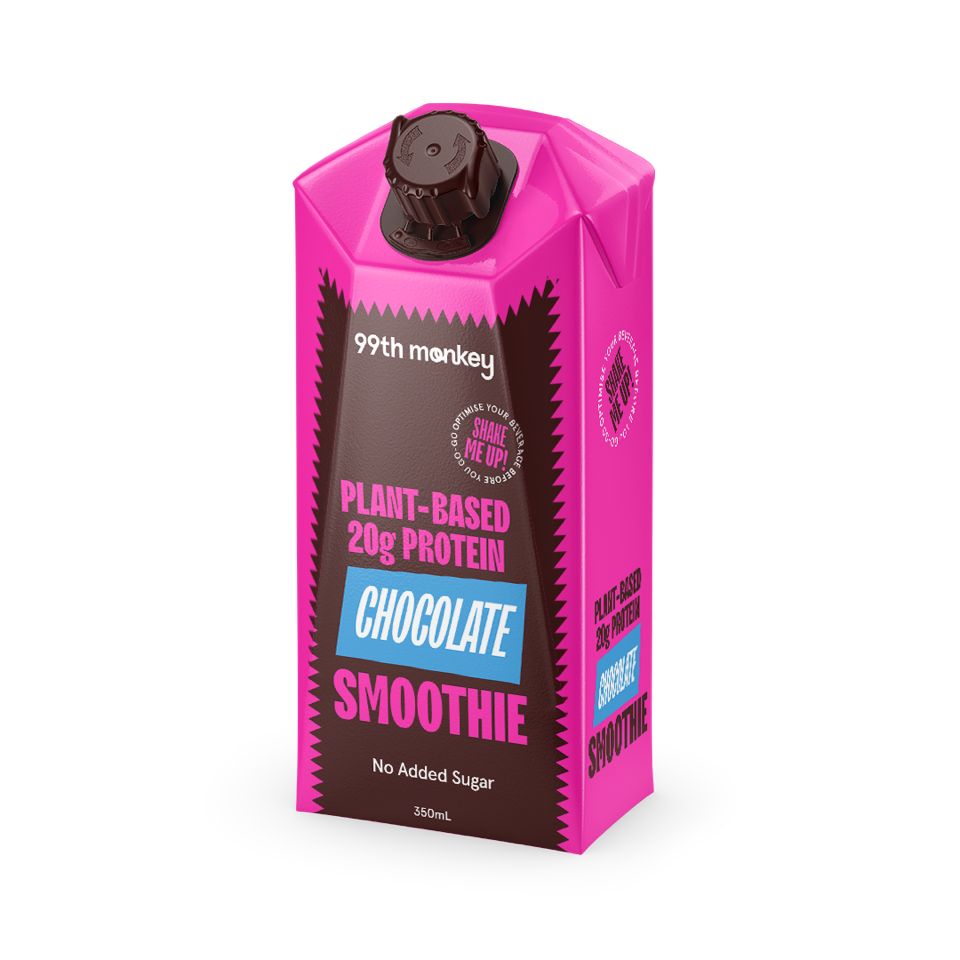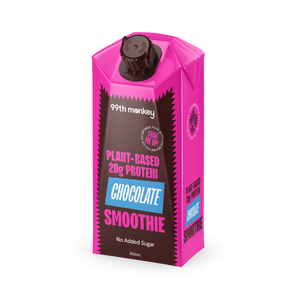How To Make a Healthy Smoothie with Nut Butter
Share

Nut butter is a great addition to help make a healthier smoothie
Whether you’re after a nutritious breakfast, a satisfying post-workout snack, or a healthy afternoon treat, smoothies are a viable option. With the right ingredients, like nut butter, smoothies can be a nutrient-dense source of fibre, protein, good fats, vitamins, and minerals. However, not all smoothies are made equal - just because they contain fruit and satisfy your sweet tooth doesn’t mean they’re all that healthy!
What makes a healthy smoothie?
To create a nutritious smoothie, your blend should feature fat, fibre, protein, and veggies. Fats aid your cells in functioning, provide you with energy, and keep you satiated, fibre feeds your gut bacteria and promotes optimal digestion, protein helps build and maintain muscle, and vegetables provide the body with micronutrients and antioxidants.
What should you put in your smoothie?
Now that you know the key nutrients needed to build a healthy smoothie, here are the best food sources to acquire them.
Fruit
Low sugar berries like strawberries, blueberries, raspberries, and blackberries make an ideal base for smoothies, providing you with free-radical fighting antioxidants and healthy fibre. If you’re drinking a smoothie as a pre or post-workout snack, you can incorporate fruits with a higher carbohydrate content like bananas or mangoes into your smoothie. As a rule of thumb, 1 cup of fruit usually works best!
Vegetables
While many conventional smoothie and acai bowl recipes rely on fruit, smoothies are a great way to up your vegetable intake. Though they significantly alter the colour of your smoothie, leafy greens like spinach and kale are virtually undetectable when paired with fruit and pack a nutritional punch. Try adding ½-1 cup of leafy greens to your smoothie. Other vegetables which blend well into smoothies (without impacting the taste) are lightly steamed zucchinis, cauliflower, carrots, sweet potatoes, and beetroot.
Nut butter
Supercharge your smoothie by adding in a source of healthy fats. Nut butter like almond butter, ABC butter, peanut butter, and almond and pistachio butter, as well as chia seeds and hemp seeds, provide fibre and heart-healthy fats, are beneficial for your energy and cholesterol, and keep you feeling fuller for longer. Use around 1-2tbsp of nut butter in your smoothie.
Protein
To amp up the protein content in your smoothies, add silken tofu, egg whites, or greek yoghurt. Alternatively, you could use protein powder like brown rice protein powder, hemp protein, powder, pea protein powder, or whey protein powder.
Whole grain
The addition of whole grains can be an effective, yet easy way to increase your fibre intake, while also providing your smoothie with a luxuriously thick consistency. Try adding a couple of tablespoons of oat bran or oats to your smoothie.
Base liquid
All important for bringing your smoothie together, healthy smoothie base choices range from unsweetened coconut or greek yoghurt and non-dairy milk to coconut water and chilled green tea. To increase the protein content, opt for pea protein milk. Otherwise, almond milk or coconut water make for lighter options.
Smoothie boosters
For an extra dose of health benefits, add some superfoods to your smoothie. Cinnamon is great for balancing blood sugar levels, turmeric has powerful anti-inflammatory properties, matcha green tea powder is an excellent source of antioxidants, and maca root helps balance hormones and provides an energy boost.
Common smoothie mistakes to avoid
To ensure your smoothie is working for you, rather than against you, avoid these common smoothie mistakes.
Accompanying your breakfast with a smoothie
If your smoothie contains ingredients like protein powder, nut butter, whole grains, and coconut or greek yoghurt, it’s likely your drink of choice contains enough calories to be a stand-alone meal, rather an accompaniment to your breakfast. If you want to enjoy a smoothie along with your brekky, ensure it’s a lighter option; stick to low-calorie liquid choices like coconut water and almond milk, vegetables, and berries.
Overdoing the fruit
While fruit is a healthy addition to smoothies, it shouldn’t be the main ingredient. Fruits like bananas and mangoes are high in calories and carbs, so don’t go overboard! If you’re trying to reduce your sugar intake, berries are your best bet. ½ to 1 cup of fruit per smoothie is a good amount to stick to.
The sweet escape
While you may not be adding refined sugar to your smoothies, additions like maple syrup, dates, coconut sugar, agave nectar, honey, and brown rice syrup still count! Added sugar can also be present in flavoured yoghurt and plant-based milk (select unsweetened varieties for both). As fruit provides natural sweetness, try not to add any additional sweeteners. Alternatively, use a natural, sugar-free sweetener like stevia or monk fruit.
The best nut butter smoothies
Here are a couple of deliciously simple smoothie recipes to get you started.
Almond butter keto smoothie
Ingredients
- 300mls almond or coconut milk
- 1 cup spinach leaves
- 2 tbsp 99th Monkey Natural Almond Butter
- 2 tbsp pea protein powder
- ½ cup frozen berries
- 1 tsp monk fruit sweetener
- 1 tsp vanilla essence
Method
In a high powered blender, blend all ingredients together until smooth.
Green goddess smoothie
Ingredients
- 300mls coconut water or almond milk
- 1 cup kale or spinach leaves
- ½ cup frozen blueberries
- 1 tbsp hemp seeds
- 1 tbsp 99th Monkey ABC Butter
- ¼ tsp cinnamon powder
- 1 tsp spirulina powder
- 1 tsp monk fruit sweetener
- 1 tsp vanilla essence
Method
In a high powered blender, blend all ingredients together until smooth.






